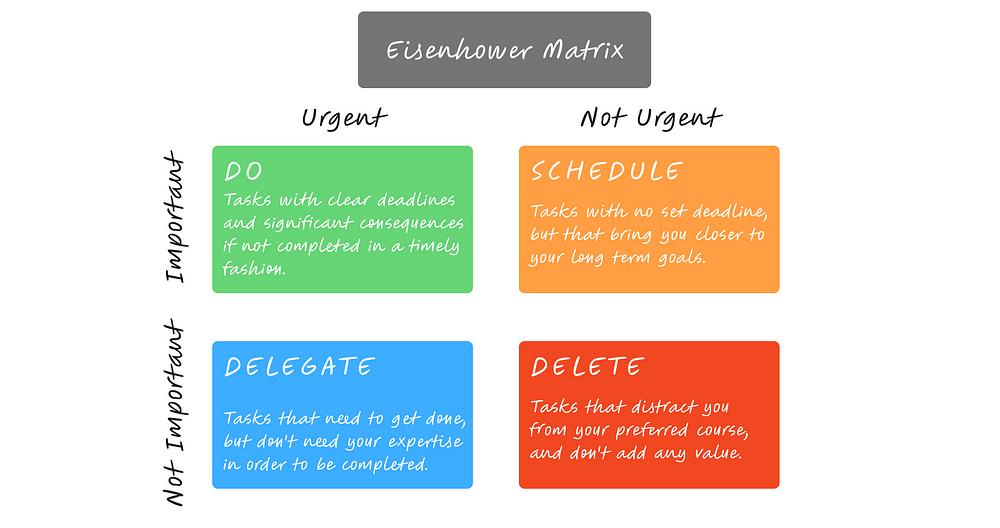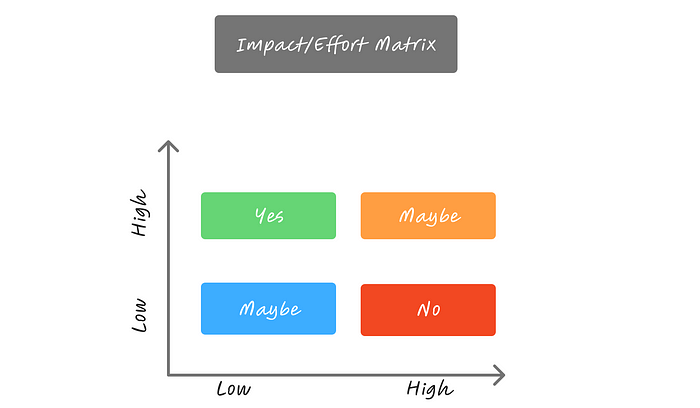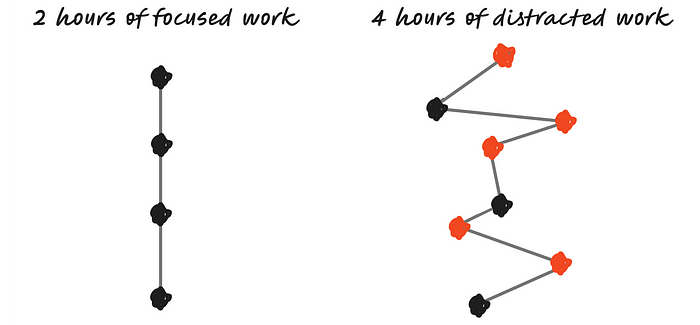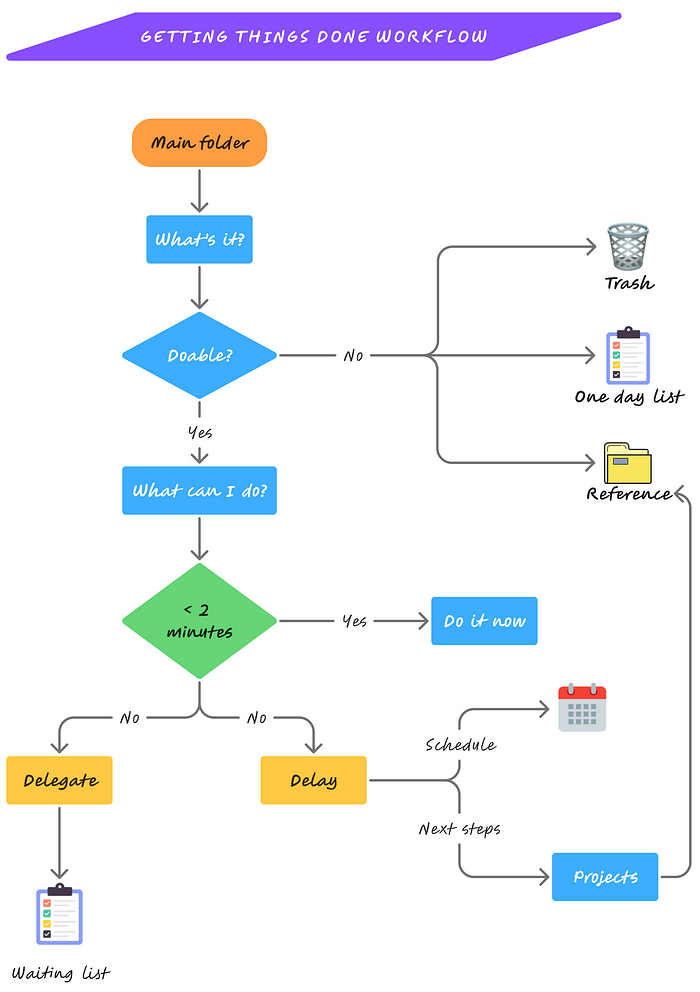The No-BS Guide to Getting 10x More Done
 Priyanka Sharma
Priyanka Sharma
But the more I watched and studied them, the clearer it became: none of that was true.
They weren’t superhuman. They just worked differently.
They didn’t chase productivity hacks or overload themselves. They focused on what mattered, cut the noise, and built systems that worked for them — not against them.
The truth is, success isn’t about finding shortcuts. It’s about being deliberate. These are a few techniques that helped me shift from busy to effective, and they might help you too.
Learn to Prioritize: Not Everything Deserves Your Time
One of the biggest reasons people stay busy but don’t get much done is this: they confuse what’s urgent with what’s actually important.
Urgent things scream for attention. Important things move you closer to your goals. Sometimes they overlap, but not always — and knowing the difference is what separates busy people from productive ones.
To stay focused, try using a tool called the Eisenhower Matrix. It’s a simple but powerful method that helps you sort tasks into four categories:

1. Important + Urgent (Do it now)
These are critical, time-sensitive tasks. Think emergencies, deadlines, or quick wins you can knock out immediately — like replying to a key client email or solving a pressing issue.
2. Important + Not Urgent (Schedule it)
These tasks matter long-term but don’t require immediate action. They’re the ones that build real momentum — learning a new skill, planning, exercising. They deserve space on your calendar.
3. Not Important + Urgent (Delegate it)
They feel urgent but don’t add real value. Things like admin work, routine emails, or unnecessary meetings. If possible, hand them off or batch them to handle in one go.
4. Not Important + Not Urgent (Drop it)
Scrolling social media. Binge-watching random shows. These aren’t helping you, and they’re stealing time you’ll wish you had back. Cut them or limit them hard.
President Dwight Eisenhower summed it up well:
“What is urgent is seldom important, and what is important is seldom urgent.”
That insight later inspired Stephen Covey’s time management system in The 7 Habits of Highly Effective People — a method that’s still helping people build better habits and more balanced lives.
Bonus Tool: The Impact–Effort Matrix
Another way to prioritize is by looking at two things:
How much effort something takes
How big of an impact it makes

The goal?
Focus on high-impact, low-effort tasks first. These are the quick wins that move the needle.
Avoid tasks that are low impact but high effort — they waste your energy. And be selective with those that fall in between. You only have so much bandwidth, so spend it wisely.
Focus Beats Hustle: Why One Thing at a Time Wins
One trait you’ll notice in top performers? They don’t spread themselves thin. While most people juggle multiple tasks, high achievers zoom in. They commit to one thing at a time — and that’s where the difference lies.
The truth is, multitasking isn’t real productivity. Our brains just aren’t wired to jump between tasks without a cost. Every switch drains focus and wastes time.

Here’s a better approach:
Start your day with intention. Pick one goal that actually matters to you. Break it into small, clear actions.
Block off time in your calendar — ideally during your peak energy hours, usually in the morning. Don’t just manage time — manage your energy.
Aim for 2–3 hour deep work sessions. It takes about 20–30 minutes just to get into a flow state, so longer uninterrupted blocks are key.
Cut out distractions. Turn off notifications, close unnecessary tabs, and signal to others that you’re in focus mode.
Batch similar tasks — respond to emails all at once, group admin work together, etc. Switching less means thinking better.
Reward yourself after big tasks. A break, a walk, a treat — whatever helps you reset. (Yes, schedule the reward too.)
Save afternoons for lower-stakes work like meetings, emails, or routine admin stuff. Don’t waste high-energy hours on low-value tasks.
Single-tasking isn’t just more productive — it’s more satisfying. You get better results, feel less drained, and build momentum you can actually sustain.
Stay Organized with the GTD Method: Clear Your Mind, Get More Done
Let’s face it — deciding what to do next is often harder than the actual work. That’s where the Getting Things Done (GTD) method steps in. Created by productivity expert David Allen, this system helps you clear mental clutter and focus on what matters most.
The core idea?
Get everything out of your head and into a trusted system — so your brain can stop juggling tasks and start focusing on doing them.
Here’s how GTD works in practice:
1. Capture Everything
Whenever something pops into your mind — whether it’s a task, idea, email, or reminder — don’t try to hold onto it. Write it down or record it in a system you trust. The goal is to stop using your brain as a to-do list.
2. Clarify What It Is
Once you’ve captured it, ask: Is this actionable?
If no, either trash it, file it away for reference, or park it for “someday.”
If yes, and it takes under two minutes, just do it now.
If it takes longer, decide: Should I delegate it, or schedule it for later?
3. Organize What’s Left
Sort the remaining tasks into categories like:
“Next Actions” (tasks you can do anytime)
Calendar items
Projects (multi-step tasks)
“Waiting For” (stuff you’re waiting on from others)
4. Review Regularly
Your system won’t work if it gets stale. Set aside time — ideally weekly — to review and update your lists. Clean out what’s done, reprioritize what’s left, and make sure nothing slips through the cracks.
5. Engage Intentionally
With everything organized, it’s time to execute. You’re not just randomly picking tasks — you’re choosing the most relevant thing to do based on where you are, how much time you have, and your current energy level.

GTD in Action: Setting Up Your Lists
Here’s what your GTD setup might look like inside a to-do app like Todoist or Microsoft To Do:
Inbox: Your dumping ground for raw thoughts and tasks. Everything starts here.
Next Actions: Your go-to list for things you can do now. Follow the 2-minute rule: if it’s quick, knock it out immediately.
Waiting For: Stuff you’ve handed off to someone else or are waiting on a response for.
Projects: Anything that takes more than one step — like launching a new feature or planning a trip — belongs here.
Someday/Maybe: Not urgent, not active, but worth keeping. Revisit when you have time or motivation.
How to Beat Procrastination (Without Just Wishing It Away)
We’ve all been there — you think of something important you need to do, jot it down in your to-do list, maybe even set a reminder. Then, when the time comes… you push it to tomorrow. And then the next day. And eventually, it disappears into the black hole of forgotten goals.
That’s procrastination. And it doesn’t happen because you’re lazy. It happens because our motivation has a shelf life.
There’s a concept called the Law of Diminishing Intent, coined by Jim Rohn and expanded by John Maxwell. It says:
“The longer you wait to do something, the less likely you are to actually do it.”
In other words, the clock is ticking on your motivation the second you have an idea. Wait too long, and it fades.
So how do you fight back?
1. Act fast — even if it’s something small
Don’t wait until you “feel ready.” Take a tiny step as soon as possible. Even writing a rough outline or making a 5-minute plan helps. Small actions build momentum, and that’s what breaks the cycle.
2. Invest in the task — even just a little
Think of effort like a snowball: the earlier you start rolling it, the bigger it gets over time. Put in a bit of energy today — even 10 minutes — and it starts compounding. You’ll build mental commitment and reduce the odds of quitting.
3. Start, and your brain will keep going
Ever notice how great ideas hit you in the shower or while walking? That’s your brain continuing to work on problems you’ve started. When you take action, even a small one, you’re telling your mind, this matters. It keeps working on it — even when you’re not.
4. Prioritize with purpose
Overwhelmed by your task list? Use the Ivy Lee Method:
At the end of each day, list 5–6 things to do tomorrow.
Rank them by importance.
Start the next day by working on task #1 — nothing else — until it’s done. Then move to #2, and so on.
If you struggle to prioritize, pair this with the Eisenhower Matrix to filter out what’s urgent vs. important.
Additional Habits That Actually Make a Difference
The big wins in productivity aren’t about doing more — they’re about doing what matters, consistently. These extra habits may seem simple, but they can completely shift how you manage your time and energy:
Plan Ahead, Even Just a Little
Take five minutes the night before — or first thing in the morning — to review your day. Choose one task that really matters, the one you’d be proud to finish. You can add more, but the less clutter on your list, the more focused you’ll be.
Thinking Isn’t Doing
We often confuse planning or overthinking with action. It’s not. What moves the needle is execution. Prioritize the 20% of tasks that drive 80% of the results — this applies to individuals and teams alike. That’s the Pareto Principle in action.
Default to “No”
Protect your time. Say no by default — especially to meetings. If a meeting isn’t clearly worth your time, skip it. Ask yourself: “Does this add value to what I’m working toward?” If not, don’t default to yes.
Automate the Boring Stuff
Any task you repeat regularly? Find a way to automate it. Use tools to handle scheduling, emails, file sorting — whatever eats up mental space. Free your brain for real work.
Timebox Your Work
If to-do lists stress you out, try timeboxing instead. Assign fixed hours to your tasks on your calendar. This adds structure and helps avoid endless context switching. Group similar work together so your brain doesn’t have to constantly shift gears.
Try Time-Blocking
Similar to timeboxing, but a bit more flexible. Divide your day into blocks — for deep work, shallow tasks, breaks, or meetings. You can adjust on the fly, but having a loose blueprint helps you stay on track and intentional.
Build a Second Brain
Use a digital note system to store ideas, tasks, and resources — like Notion, Obsidian, or Evernote. That way, you won’t rely on memory and can always find what you need, fast.
Sleep and Move
This one’s underrated. Poor sleep wrecks focus. Aim for 7–8 hours of quality rest. Pair it with regular movement — walks, stretching, or workouts. This combo boosts clarity and long-term productivity like nothing else.
Do Things That Calm You
Whether it’s meditation, journaling, or just breathing deeply for five minutes — make space to unwind. It helps you enter flow faster and stay grounded in the middle of chaos.
There’s no secret formula, no life hack that replaces consistent effort. Productivity isn’t about squeezing more into your day — it’s about making better decisions with the time and energy you already have.
Start small. Try one or two of these strategies and build from there. What works for someone else might not work for you, and that’s okay. The goal isn’t perfection — it’s progress.
Stay focused, stay consistent, and remember: Doing the work is what actually gets results.
Subscribe to my newsletter
Read articles from Priyanka Sharma directly inside your inbox. Subscribe to the newsletter, and don't miss out.
Written by

Priyanka Sharma
Priyanka Sharma
My name is Priyanka Sharma, commonly referred to as lassiecoder within the tech community. With ~5 years of experience as a Software Developer, I specialize in mobile app development and web solutions. My technical expertise includes: – JavaScript, TypeScript, and React ecosystems (React Native, React.js, Next.js) – Backend technologies: Node.js, MongoDB – Cloud and deployment: AWS, Firebase, Fastlane – State management and data fetching: Redux, Rematch, React Query – Real-time communication: Websocket – UI development and testing: Storybook Currently, I'm contributing my skills to The Adecco Group, a leading Swiss company known for innovative solutions.